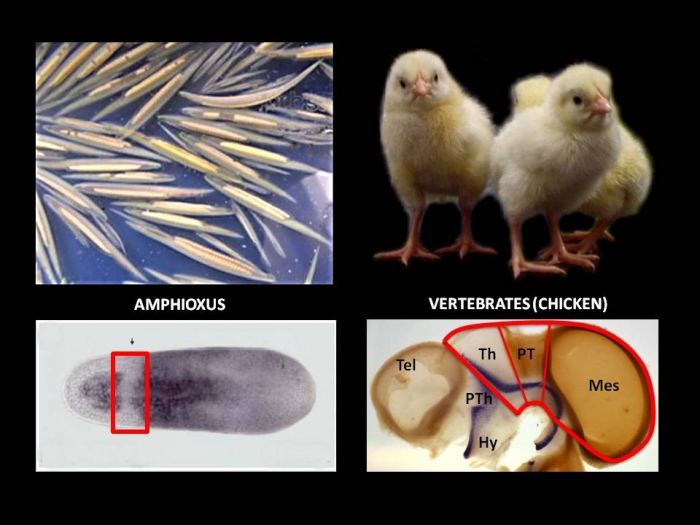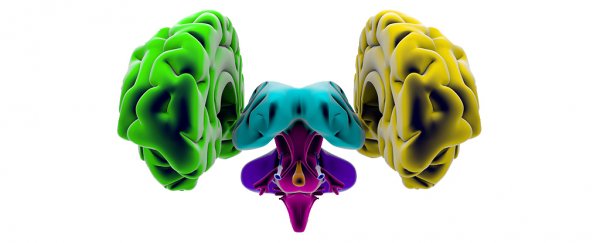As complex as the human brain is, it more or less has the same fundamental structure as most other backboned animals - which means it can be divided into three general regions: forebrain, midbrain, and hindbrain.
Researchers have long thought that these three sections all evolved from three simpler versions in our vertebrate ancestors. But a new map of the genes being activated in the brains of a tiny fish-like animal suggests that's not the case, and it could force us to revise our assumptions about how vertebrate brains evolved.
The network of activated genes, technically described as a genoarchitectonic model, was produced by an international team of researchers looking at how a primitive form of vertebrate known as a lancelet could represent the first steps into evolving a complex central nervous system.
You might not think you have a lot in common with the tiny marine animal, but it's about as close as an animal can get to being called a vertebrate without being a card-carrying member.
While they don't have a rigid backbone as such, they do have the features of other animals called chordates, such as a hollow rod called a notochord running down the length of their body and a number of gill-like structures called pharyngeal slits.
This simple anatomy makes them a pretty good representative of our ancestors from some 500 million years ago, right when vertebrates were branching away from the rest of the family tree.
That makes them a prime organism for scientists to gain an understanding of how our nervous system evolved from a simple bundles of nerve to a highly ordered structure.
Genetic sequencing conducted in the past decade has revealed which genes might be involved in the evolution of vertebrates, but only now have researchers looked to see which genes are activated in their nervous system to compare their structures.
Lancelets (also called amphioxi) don't have a brain quite in the same way we do, but they do have nerves running through the notochord that bunch up in a small, brain-like structure.
Like other vertebrates, our brain tends to be divided into three major regions; the forebrain, midbrain, and hindbrain.
The current favoured hypothesis is these major areas all evolved from simpler versions in ancestral vertebrates, but according to the researchers, the genes suggest a different story.
"In the study, we described this molecular map – which contains the largest number of markers so far – with the divisions that occur in the neural plate of the cephalochordate", says researcher Beatriz Albuixech-Crespo from the University of Barcelona, Spain.
In other words, the researchers compared the expressions of 48 genes that were understood to have key roles in how the nervous systems develop in embryonic lancelets with those of modern vertebrates.
"Hence, by comparing the territories of the modern vertebrate brain to that of amphioxus, we analysed what might have occurred to lead them to multiply and how such a complex structure was formed in the course of our evolution", says researcher José Luis Ferrán from the University of Murcia in Spain.
The map revealed there weren't three major regions in pre-vertebrate nervous systems as claimed in the textbooks – there were probably only two; there was no exclusive region of cells that would later give rise to what we refer to as the vertebrate midbrain.
 Laia Cendrós, Centre for Genomic Regulation
Laia Cendrós, Centre for Genomic Regulation
Instead, there was a shared zone in the front region of the lancelet's brain that the researchers called the di-mesencephalic primordium.
The molecular map suggested it was this bunch of nerves that would evolve into structures in both our midbrain and forebrain.
Not only is this a cause to rethink how sections of our brain relate to one another in terms of evolution, it provides us with a way of understanding the pressures that caused the primitive nervous system to develop new tools for coping with changes in its surroundings.
"The brain has not evolved in isolation, but rather through the interaction of these primitive animals with the environment," says Ferrán.
This research was published in PLOS Biology.
